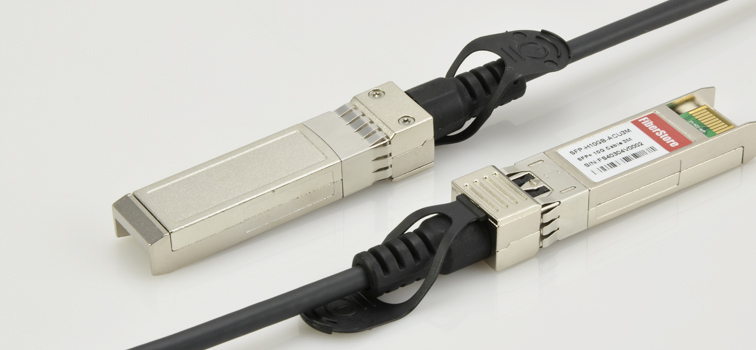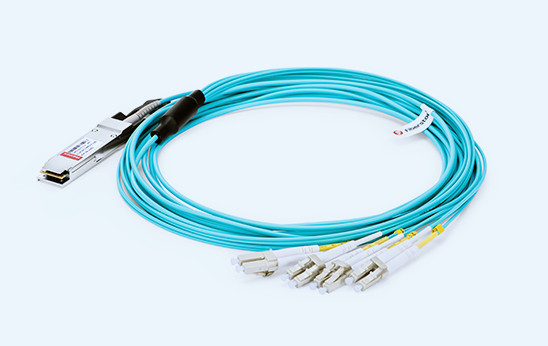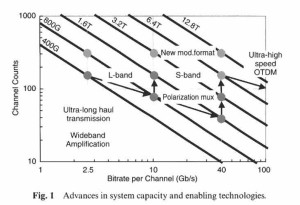The 40GBASE-CR4 short reach copper segment is defined in Clause 85 with the standard. It specifies a media system according to four lanes of PCS data carried over four twinaxial cables. A twinaxial cable is just like coaxial cable, with the exception that each twinaxial cable has two inner conductors instead of the single conductor seen in coaxial cable.
The 40GBASE-CR4 standard defines a medium dependent interface that’s using a quad small form-factor pluggable (QSFP+) connector, referenced within the IEEE standard as small form-factor specification SFF-8436. The QSFP+ module isn’t standardized with a formal standards group, but instead is specified by a multisource agreement (MSA) produced by competing manufacturers.
As technology advances, cabling and equipment vendors work together to develop smaller and more efficient connectors and modules.While the segment length is specified up to 7 m, some vendors provide both active and passive versions with the 40GBASE-CR4 cable, using the active versions capable of longer segment lengths. As an example, a vendor offer lengths of 1, 3, and 5 m in passive cables, with 7 and 15 m supported in active cables. You’ll find variations in supported cable types and lengths among different vendors, and it’s up to you to verify the sup? ported cable lengths on the equipment you purchase.
The QSFP+ connector module used on the copper cables is exactly the same basic module as that used on 40Gb/s optical fibre links. However, instead of providing an optical transceiver at each end to which a fibre optic cable is connected, the 40GBASE-CR4 cable uses the QSFP+ module but leaves out the expensive optical lasers.
A fixed-length 40GBASE-CR4 direct attach cable segment, that is always sold with the QSFP+ modules permanently attached to each end of the cable. This cable provides four pairs of conductors in a fairly thick cable, with an outer di? ameter which range from 6.1 mm (0.24 inches) for a 1 m cable up to 9.8 mm (0.39 inches) for a 7 m cable length. The bend radius is typically specified as being 10 times the outer diameter. That might lead to a bend radius of from 6.1 cm (2.4 inches) to 9.8 cm (3.85 inches) for the cable outer diameters mentioned.
The QSFP+ module itself is roughly three inches in length, not including the plastic tab that, when pulled, disengages the connector from the port. This will make for a fairly long connector assembly on either side of the cable, and to connect anything besides closely associated equipment, you’ve got to be capable to route the cable and the permanently attached QSFP+ modules through any intervening cable management trays and cable guides.
Although QSFP+ transceiver module has 38 contacts on it, the 40GBASE-CR4 standard only specifies the set of contacts needed for transmitting and receiving four lanes of data. The signal crossover from source lane (Tx) to destination lane (Rx) is supplied from the wiring scheme specified by the standard.
Fiberstore offers 40G QSFP+ cables in various lengths and other options ,these cables can be used a direct replacement for OEM cables (e.g., Cisco etc.). These carrier-grade cables are utilized in tier-1 service providers, data centres, hospitals, universities, and enterprises across The United States.



